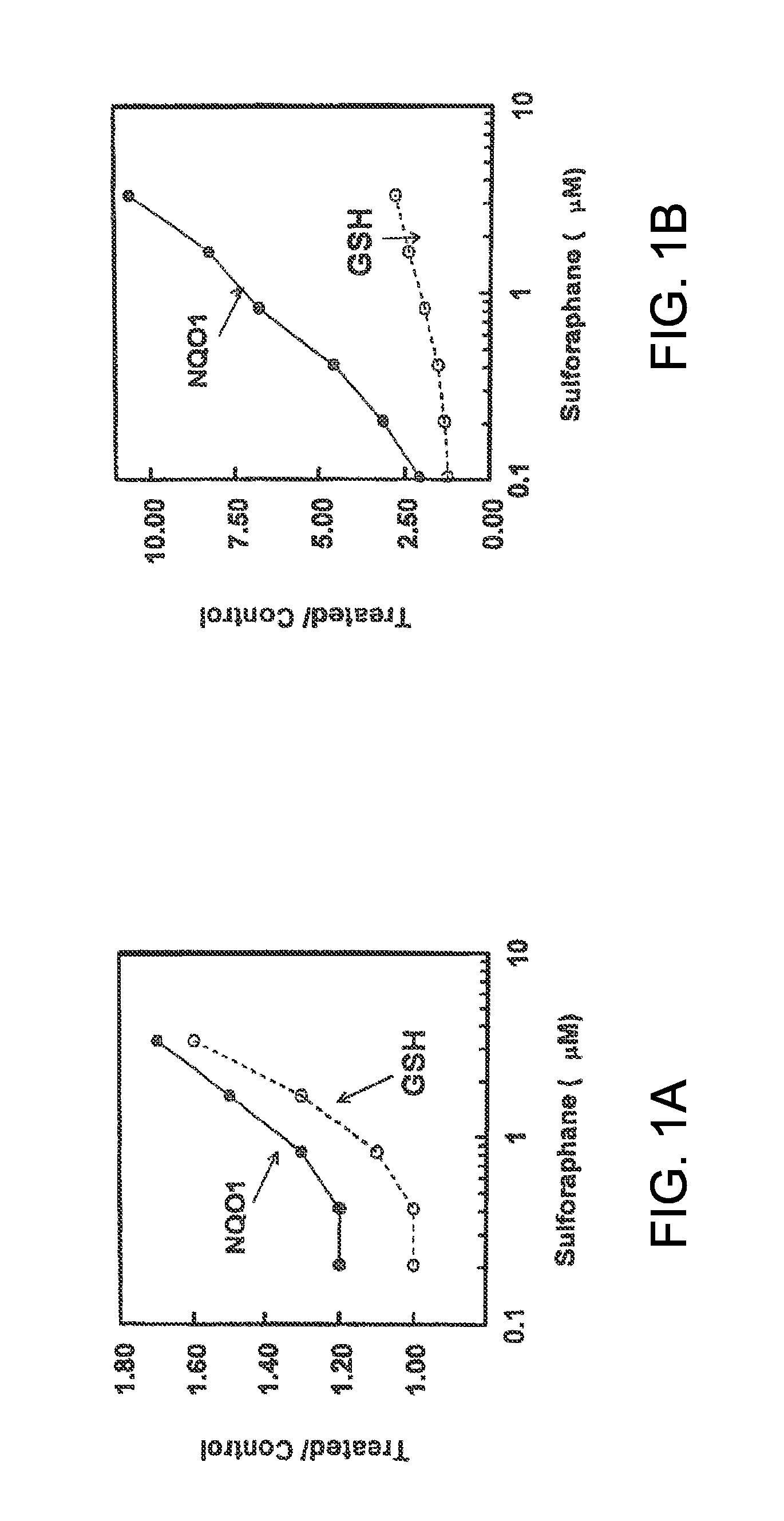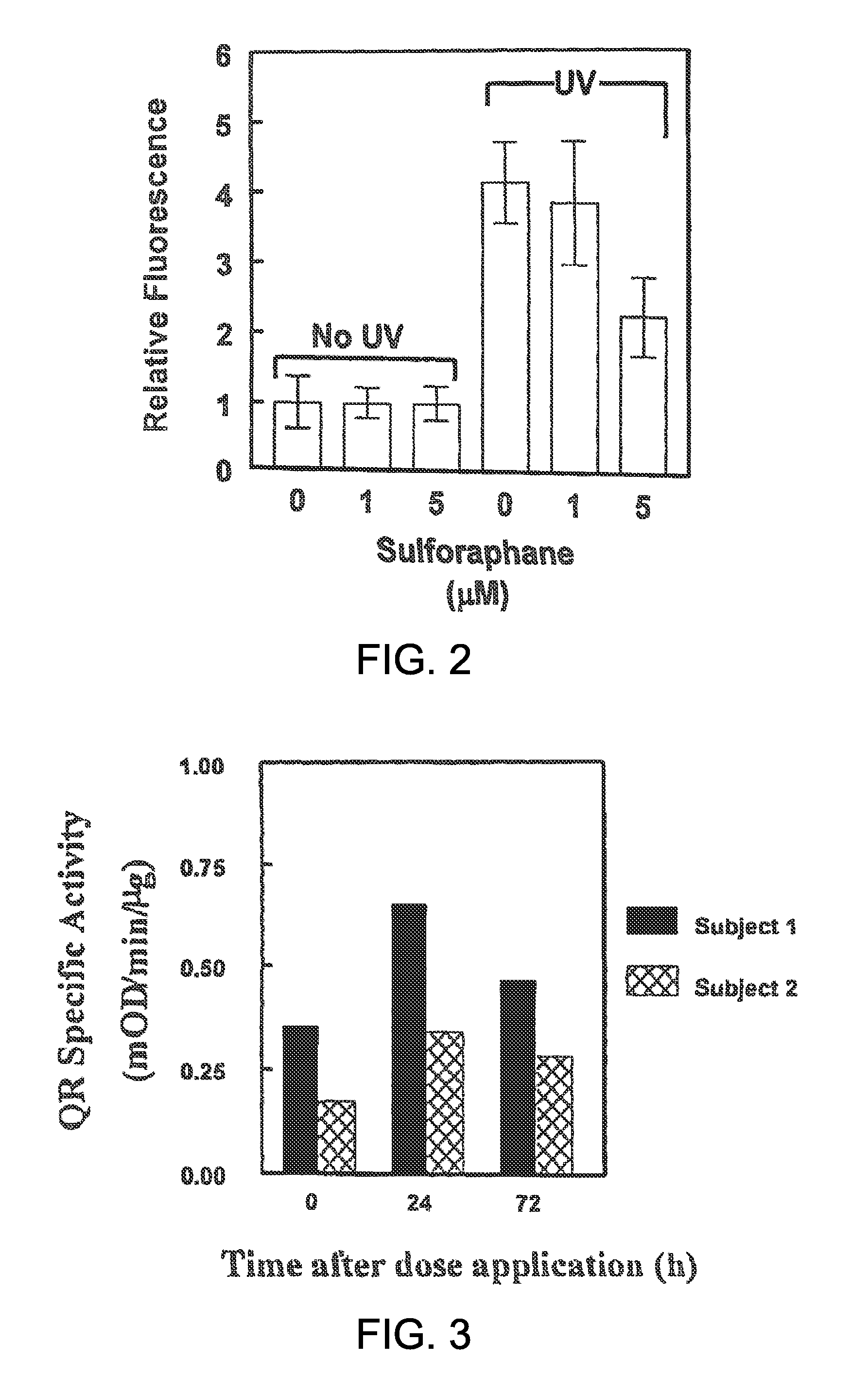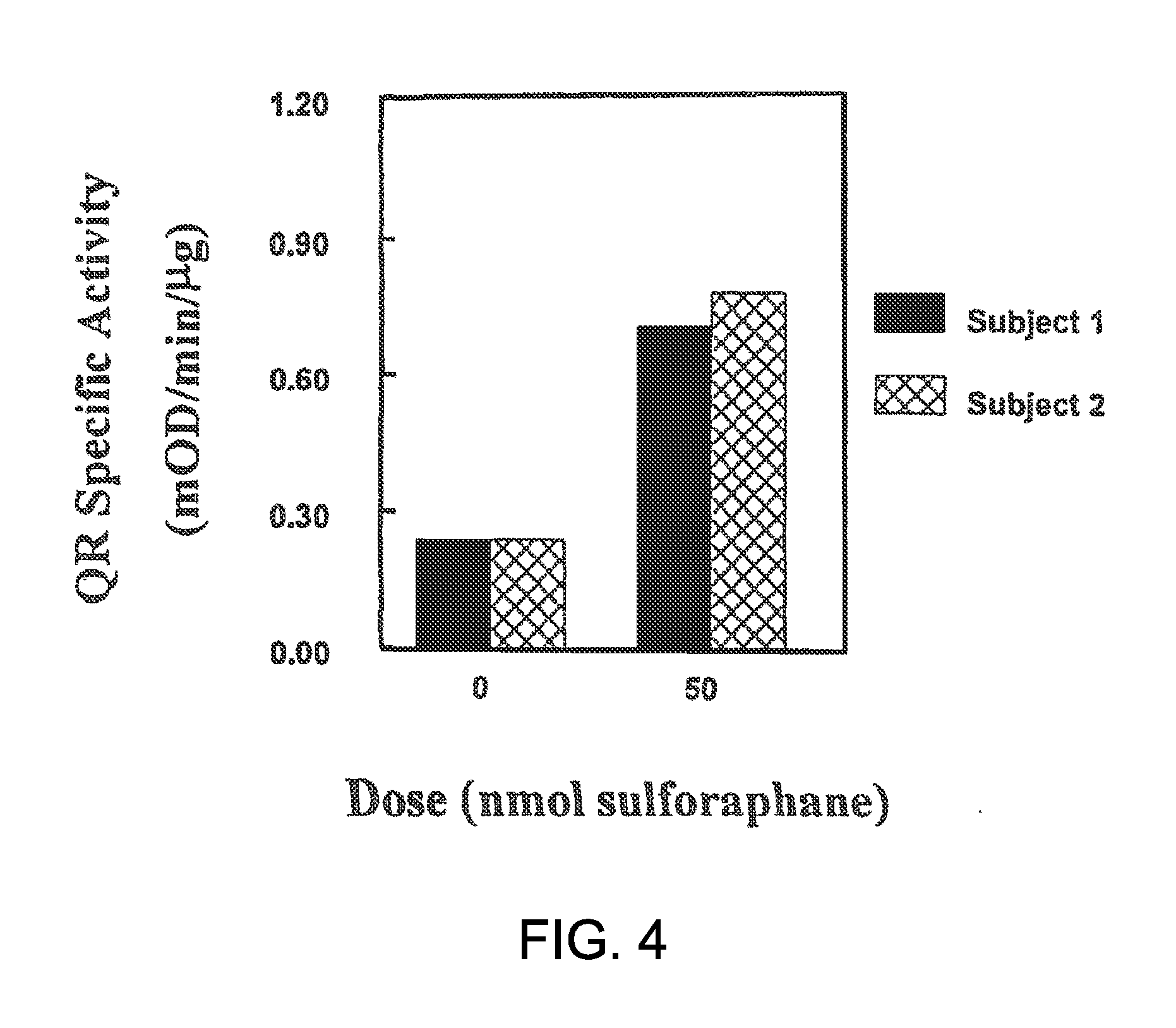Methods for protecting the skin from radiation insults
a technology of radiation insult and skin protection, applied in the direction of biocide, drug composition, extracellular fluid disorder, etc., can solve the problem that patients to be treated may suffer short-term or long-term effects
- Summary
- Abstract
- Description
- Claims
- Application Information
AI Technical Summary
Benefits of technology
Problems solved by technology
Method used
Image
Examples
example 1
Preparation of Sulforaphane from Broccoli Sprouts
[0067]Seeds of broccoli (Brassica oleracea italica, cv. DeCicco), certified not to have been treated with any pesticides or other seed treatment chemicals, were sprouted and processed as described by Fahey et al. (12). Briefly, seeds were surface-disinfected with a 25% aqueous solution of Clorox® bleach containing a trace of Alconox® detergent and exhaustively rinsed with water. The seeds were then spread out in a layer in inclined, perforated plastic trays, misted with filtered water for 30 s about 6 times / h and illuminated from overhead fluorescent lamps. Growth was stopped after 3 days by plunging sprouts directly into boiling water in a steam-jacketed kettle, returning to a boil, and stirring for ˜5 min. This treatment inactivated the endogenous sprout myrosinase and extracted the glucosinolates. Glucoraphanin, the precursor of sulforaphane, was the predominant glucosinolate in the initial extract as determined by HPLC (26). Daiko...
example 2
Treatment of Keratinocytes with Sulforaphane
[0068]Glutathione is the primary and most abundant cellular nonprotein thiol and constitutes a critical part of the cellular defense: it reacts readily with potentially damaging electrophiles and participates in the detoxification of reactive oxygen intermediates and their toxic metabolites by scavenging free radicals and reducing peroxides. The capacity to increase cellular levels of GSH is critically important in combating oxidative stress. To this end, we examined the ability of the sulforaphane-induced phase 2 response to protect against oxidative stress caused by UVA in cultures of keratinocytes. We chose UVA for this study, because its genotoxicity is thought to be primarily due to the generation of reactive oxygen intermediates.
[0069]Cell Cultures
[0070]HaCaT human keratinocytes (a gift from G. Tim Bowden, Arizona Cancer Center, Tucson) were cultured in Dulbecco's modified Eagle's medium (DMEM) supplemented with 5% FBS; and PE murine...
example 3
Effect of Topical Application of Sulforaphane on NQO1 and GSH in Mice
[0076]The phase 2 response was next evaluated in vivo in SIGH-1 hairless mice. Female SKH-1 hairless mice (4 weeks old) were obtained from Charles River Breeding Laboratories (Wilmington, Mass.) and were acclimatized in our animal facility for 2 weeks before the start of the experiment. The animals were kept on a 12-h light / 12-h dark cycle, 35% humidity, and given free access to water and pelleted AIN 76A diet (Harlan TekLad, free of inducers). All animal experiments were in compliance with the National Institutes of Health Guidelines and were approved by the Johns Hopkins University Animal Care and Use Committee.
[0077]Seven-week-old SKH-1 hairless mice (5 per group) were treated topically on their backs with either 100 μl of a standardized myrosinase-hydrolyzed broccoli sprout extract containing 1 μmol of sulforaphane, or vehicle (100 μl of 80% acetone:20% water, v / v). The animals were euthanized 24 h later and th...
PUM
| Property | Measurement | Unit |
|---|---|---|
| Substance count | aaaaa | aaaaa |
| Phase | aaaaa | aaaaa |
Abstract
Description
Claims
Application Information
 Login to View More
Login to View More - R&D
- Intellectual Property
- Life Sciences
- Materials
- Tech Scout
- Unparalleled Data Quality
- Higher Quality Content
- 60% Fewer Hallucinations
Browse by: Latest US Patents, China's latest patents, Technical Efficacy Thesaurus, Application Domain, Technology Topic, Popular Technical Reports.
© 2025 PatSnap. All rights reserved.Legal|Privacy policy|Modern Slavery Act Transparency Statement|Sitemap|About US| Contact US: help@patsnap.com



